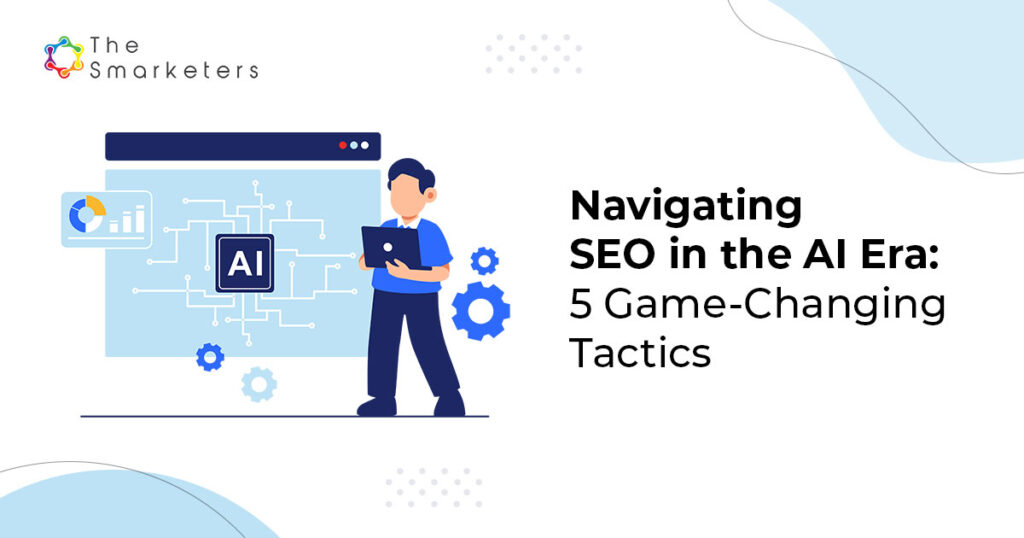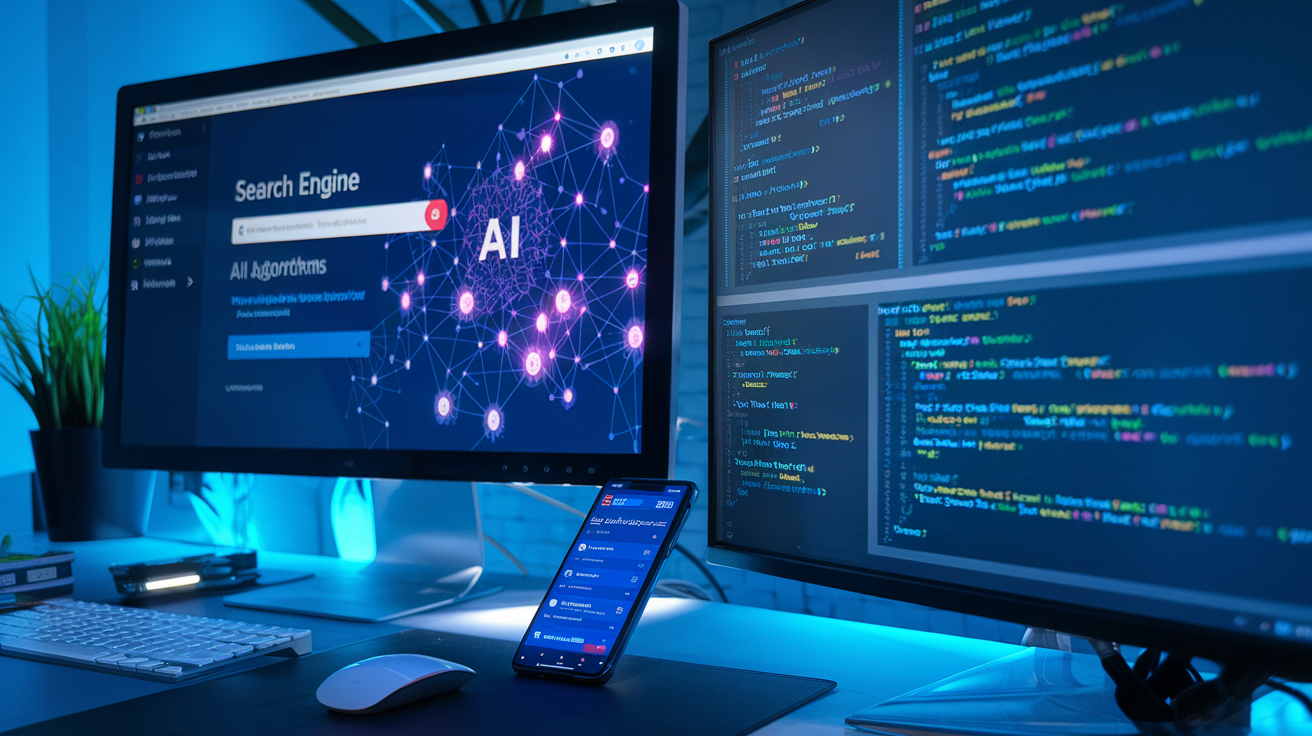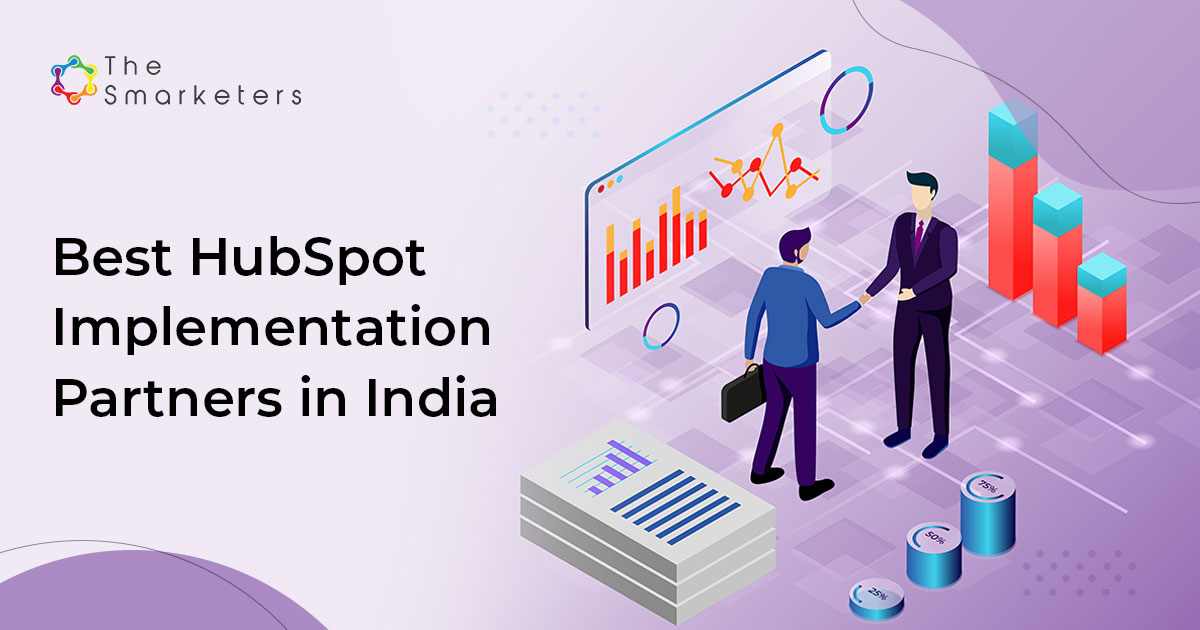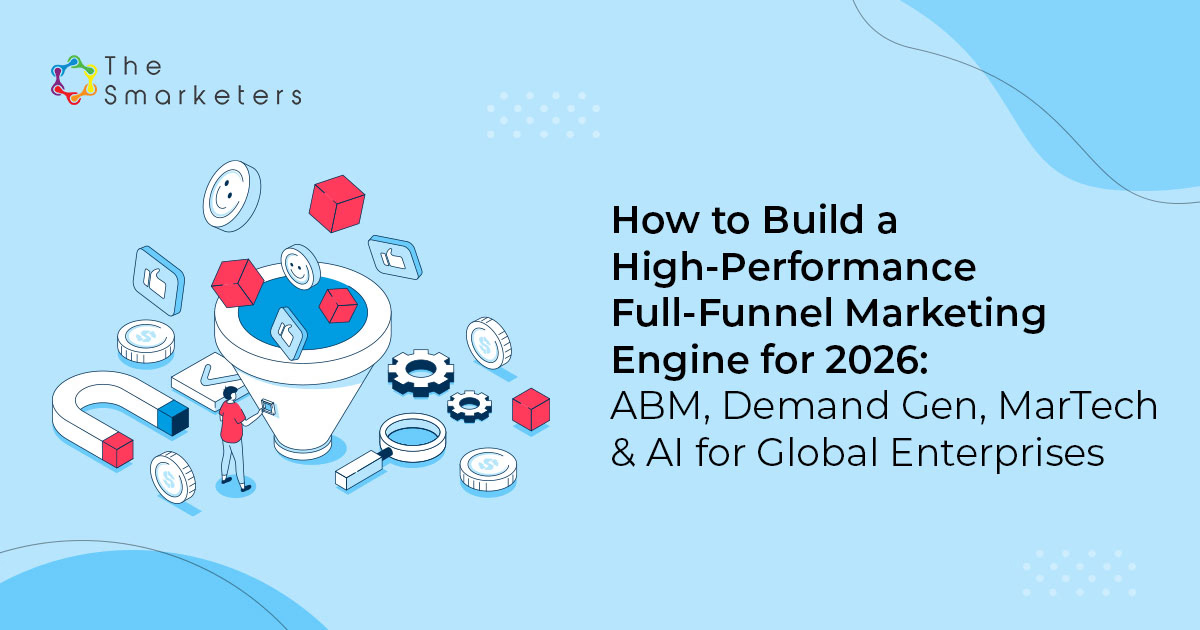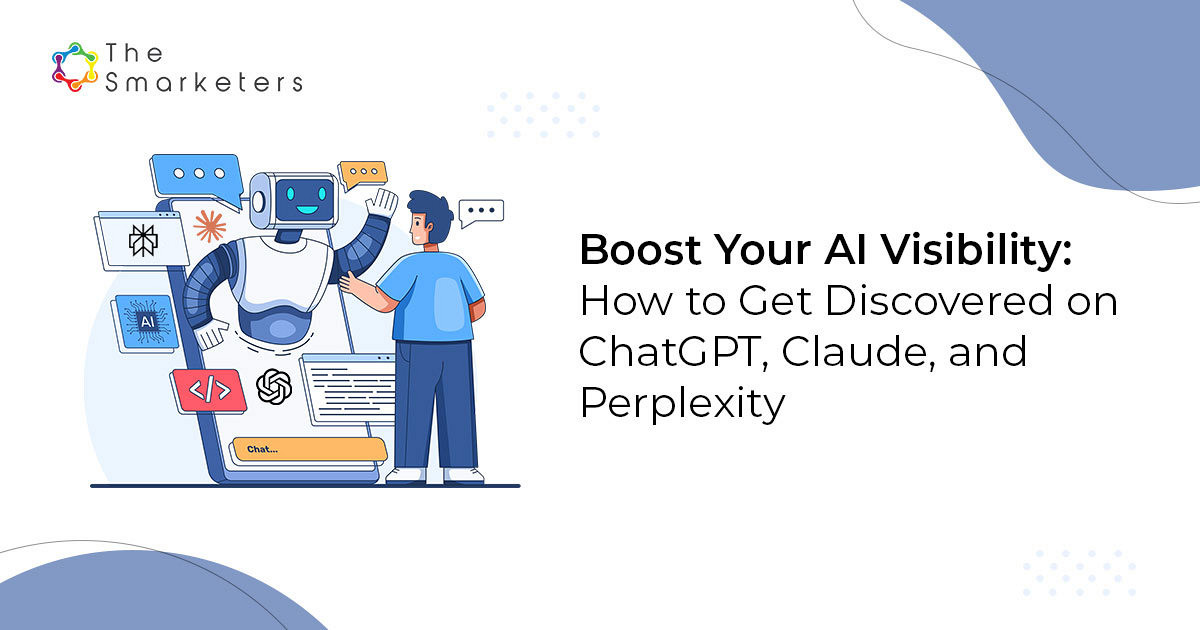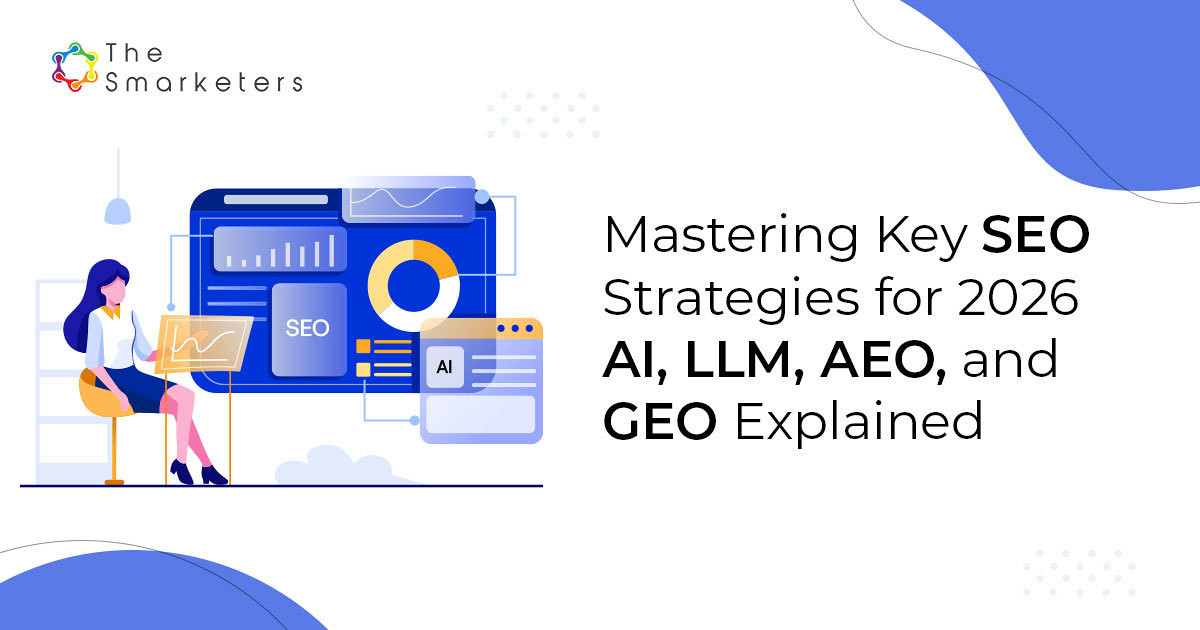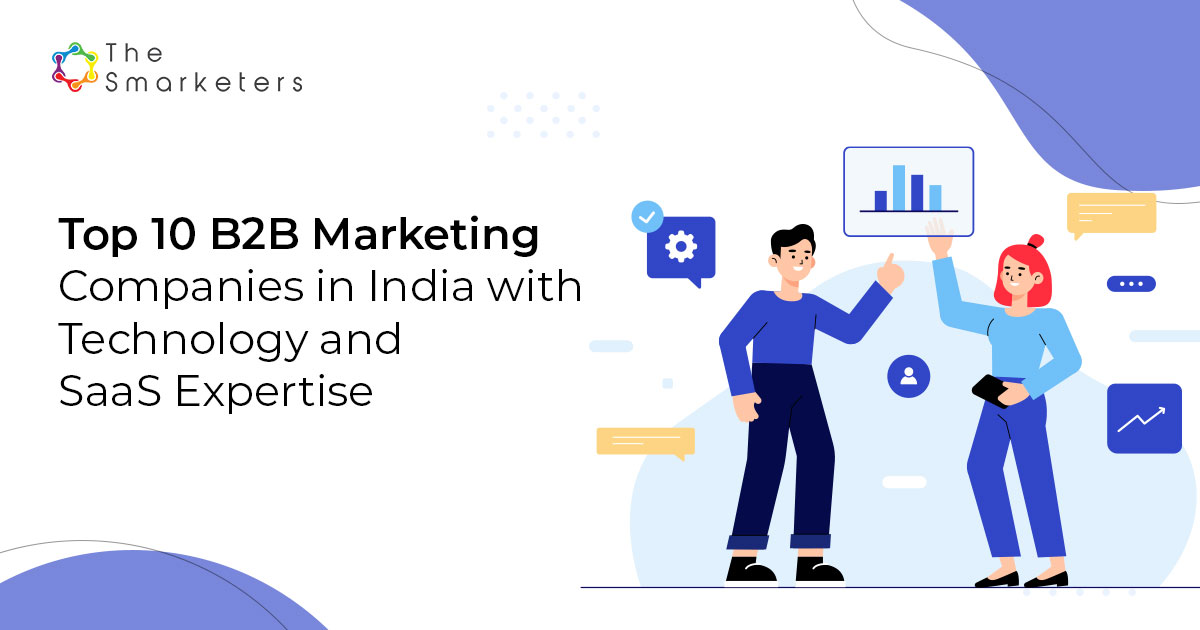Remember when Google updates sent everyone into panic mode? That was just the warmup. AI just crashed the SEO party, and most marketers are standing there like deer in headlights.
Your competitors are either ignoring AI completely or throwing money at half-baked automation tools. Meanwhile, your organic traffic keeps sliding despite following all those “timeless SEO tactics” from 2019.
Let’s be real – modern SEO strategy needs a complete rethink. Those who adapt their approach to work with AI (not against it) will absolutely dominate search rankings this year.
The five tactics I’m about to share aren’t your typical “just create quality content” fluff. They’re the exact methods my agency used to double client traffic after the latest AI updates.
But here’s the question keeping me up at night…
Understanding the SEO Landscape in the Age of AI
How AI is reshaping search engine algorithms
Gone are the days when you could stuff keywords into your content and call it SEO. The game has completely changed—and AI is the star player reshaping the rules.
Google’s BERT and MUM algorithms now understand your content almost like humans do. They read between the lines, grasp context, and pick up on nuances that older algorithms couldn’t dream of detecting. What does this mean for you? Your content needs to actually make sense and provide genuine value.
Think about it—when you search for “best pizza near me at night,” Google doesn’t just match keywords anymore. It understands you want open restaurants serving quality pizza in your vicinity, right now. That’s AI working behind the scenes to interpret search intent.
The impact on your SEO strategy is massive. You’re no longer optimizing for robots but for sophisticated AI systems that think more like your customers. This shift rewards quality, relevance, and user experience above all else.
Key AI technologies influencing SEO today
Several AI technologies are directly impacting how your content performs in search:
-
Natural Language Processing (NLP): This technology helps search engines understand conversational queries. Your content needs to answer questions naturally, not just match exact phrases.
-
Machine Learning Algorithms: These continuously improve by analyzing billions of searches and clicks. They track which results satisfy users and adjust rankings accordingly.
-
Computer Vision: Google can now understand images and videos without relying solely on alt text or metadata. Visual content quality matters more than ever for your SEO.
-
Voice Search AI: With the rise of voice assistants, your SEO strategy must account for how people speak (hint: it’s different from how they type).
These technologies affect everything from SERP layouts to how Google interprets your AI SEO strategies.
The shift from keyword-focused to intent-focused strategies
The biggest change you need to embrace? Moving beyond keywords to focus on search intent.
In the past, you’d optimize a page for “AI SEO strategies” by placing that exact phrase throughout your content. Now, you need to consider what someone searching that term actually wants.
Are they looking for:
- A beginner’s guide to implementing AI in SEO?
- Advanced technical information on AI algorithms?
- Case studies showing AI SEO results?
- Tools that leverage AI for SEO?
Your content needs to address the real questions behind the search, not just match the words. This means creating comprehensive resources that satisfy the searcher’s true goals.
Content clustering has become crucial too. Instead of creating dozens of pages each targeting slight keyword variations, you’re better off building authoritative content hubs that thoroughly cover topics from various angles.
Leveraging AI Tools for Superior Keyword Research
AI-powered tools that uncover high-value search terms
Gone are the days of guesswork in keyword research. You now have access to AI tools that dig deeper than traditional keyword planners ever could. These smart systems analyze search patterns, user intent, and competitive landscapes to identify keywords with the perfect balance of volume and competition.
Tools like Clearscope, MarketMuse, and Frase don’t just show you keywords—they reveal the entire semantic field around your topics. When you plug in a seed keyword, these AI assistants return clusters of related terms that help your content cover topics comprehensively.
The real game-changer? These tools can spot keyword opportunities your competitors have missed. They identify semantic gaps in existing content and suggest terms that might not have massive search volume but convert like crazy when targeted properly.
Using machine learning to predict keyword trends
Why chase today’s popular keywords when you can target tomorrow’s winners? Machine learning algorithms now analyze historical search data to forecast which terms will gain traction in the coming months.
You can leverage these predictive capabilities to position your content ahead of trend curves. Google Trends with its predictive features gives you a glimpse, but specialized AI SEO tools go further by combining trend data with industry-specific inputs.
Think of it as having a crystal ball for your content calendar. When you spot a keyword predicted to surge next quarter, you can create and optimize content before your competitors even realize the opportunity exists.
Balancing traditional and AI-suggested keywords
The trick isn’t choosing between human intuition and AI suggestions—it’s combining them. Your industry experience tells you which terms resonate with real customers, while AI tools uncover hidden opportunities you might miss.
Create a keyword strategy that looks like this:
| Keyword Source | Best Used For | Pitfalls to Avoid |
|---|---|---|
| Traditional Research | Core business terms & established products | Missing emerging terms & long-tail opportunities |
| AI Suggestions | Semantic coverage & trend prediction | Blindly targeting terms without business relevance |
| Combined Approach | Comprehensive content that ranks AND converts | Over-optimization for machines at expense of readability |
Creating content that satisfies both algorithms and humans
The ultimate SEO win? Content that makes both search engines and readers happy. AI tools help you optimize for algorithms, but you need to maintain the human touch.
Start with AI-suggested keywords as your foundation, then craft content that actually solves problems for real people. Use natural language that flows conversationally rather than awkwardly stuffing keywords.
Remember that search engines have gotten scary good at detecting content created purely for algorithms. When you write something genuinely helpful that uses relevant terminology naturally, you’re actually optimizing for both audiences simultaneously.
Creating AI-Optimized Content That Ranks
Using AI writers without sacrificing authenticity
Gone are the days when AI-generated content was easily spotted. Today’s AI writing tools are sophisticated enough to create content that’s nearly indistinguishable from human writing. But that doesn’t mean you should just hit “generate” and publish.
The secret? Use AI as your assistant, not your replacement. Start by feeding the AI with your unique insights and brand voice guidelines. Then, review and inject your personal experiences, industry knowledge, and original thoughts that no AI could replicate.
Think of it like cooking with a recipe app – the app gives you the framework, but you add your own special ingredients to make the dish uniquely yours.
Try this approach:
- Draft your outline and key points manually
- Use AI to expand sections and suggest improvements
- Review and rewrite at least 30% with your personal touch
- Add real-world examples only you would know
Structuring content for both AI crawlers and human readers
The balancing act of pleasing both search algorithms and human visitors isn’t as tricky as you might think. They both want basically the same thing: well-organized, valuable content.
For AI crawlers, structure matters tremendously. Your content should follow a logical hierarchy with proper heading tags (H2s, H3s, H4s) that include your target keywords naturally. Break up long paragraphs into digestible chunks and use bullet points to highlight key information.
For your human readers, focus on:
- Clear, conversational language (exactly like you’re reading now)
- Scannable content with visual breaks
- Meaningful subheadings that preview what’s coming next
- Stories and examples that create emotional connections
When in doubt, prioritize humans. Search engines are getting better at measuring user engagement signals anyway, so content that keeps real people reading will naturally perform better.
Implementing schema markup for enhanced AI understanding
Schema markup is like giving search engines a cheat sheet about your content. It’s basically a specific vocabulary that helps AI understand exactly what your content means, not just what it says.
You don’t need to be a coding wizard to implement schema. Here’s a simplified process:
- Visit Schema.org to identify the most relevant schema types for your content
- Use Google’s Structured Data Markup Helper to generate the code
- Test your markup with Google’s Rich Results Test tool before publishing
- Monitor performance in Search Console
For SEO in the AI era, focus on these high-impact schema types:
- FAQPage schema for question-based content
- HowTo schema for instructional content
- Article schema with author and publication details for E-E-A-T signals
- Product schema for merchandise pages
Maintaining E-E-A-T standards in AI-assisted content
Experience, Expertise, Authoritativeness, and Trustworthiness (E-E-A-T) remain crucial even when using AI writing tools. Google doesn’t penalize AI content – it penalizes poor quality content regardless of how it was created.
To maintain strong E-E-A-T signals:
- Have qualified experts review AI-generated technical content
- Include author bios with credentials and experience
- Link to authoritative sources that back up your claims
- Update content regularly to ensure accuracy
- Share personal anecdotes and unique insights AI couldn’t generate
Remember that AI tools don’t have real-world experience or industry expertise – only you do. Your knowledge is your competitive advantage in the AI era.
Case studies: Successful AI-optimized content strategies
Take NerdWallet’s approach as inspiration. They use AI to handle data analysis and formatting for financial product comparisons, but their financial experts write the interpretations and recommendations. The result? Top rankings for competitive financial terms while maintaining their reputation for trustworthy advice.
Or look at Healthline, which uses AI for research and structure but has medical professionals verify all health content. Their articles consistently rank well because they balance AI efficiency with human expertise.
The common thread among successful brands? They use AI strategically:
| Brand | AI Usage | Human Element | Results |
|---|---|---|---|
| NerdWallet | Data processing, formatting | Expert analysis, recommendations | 27% traffic increase |
| Healthline | Research, outlining | Medical review, personal stories | Top rankings for health terms |
| Wirecutter | Competitive analysis | Product testing, real opinions | 35% higher engagement metrics |
The winning formula isn’t about choosing between AI or humans – it’s about combining both for content that’s both efficient to produce and impossible to replicate.
Adapting Technical SEO for AI-First Indexing
Speed Optimization for AI Crawlers
Gone are the days when you could get away with a slow website. AI crawlers now zip through sites faster than ever, and they’re not patient with laggy pages.
Want the brutal truth? If your site takes forever to load, AI crawlers will spend less time on it. This directly affects how much of your content gets indexed. Not ideal, right?
Start by compressing those massive images that are dragging you down. Next, enable browser caching so returning visitors (and crawlers) don’t need to reload everything each time. Your CSS and JavaScript files? Minify them. Every millisecond counts.
Here’s a quick checklist to tackle today:
- Implement a Content Delivery Network (CDN)
- Use lazy loading for images and videos
- Reduce server response time
- Eliminate render-blocking resources
Modern AI crawlers are sophisticated enough to recognize when you’ve optimized for speed, and they reward sites that offer smooth experiences.
Mobile-First Strategies in the AI Era
News flash: your desktop-only optimization strategy is officially obsolete. Google’s AI now sees the world through a mobile-first lens, and you need to adjust accordingly.
The numbers don’t lie – most of your visitors are probably on mobile devices right now. AI crawlers prioritize the mobile version of your site when determining rankings. Still treating mobile as an afterthought? Big mistake.
Make these changes immediately:
- Design for thumbs, not mice – buttons should be easily tappable
- Simplify your navigation for smaller screens
- Test your site’s responsiveness across multiple devices
- Ditch those intrusive popups that make mobile users want to scream
Remember that AI understands context too. If someone searches on a mobile device, the AI will favor sites that offer stellar mobile experiences matching the user’s current situation.
Voice Search Optimization Techniques
Think about how you talk versus how you type. Pretty different, right? Voice searches are typically longer, more conversational, and often phrased as questions.
AI voice assistants like Siri, Alexa, and Google Assistant are changing how people find information online. If you’re still only optimizing for typed searches, you’re missing a massive opportunity.
To capture voice traffic:
- Target question phrases (who, what, when, where, why, how)
- Create FAQ sections that mirror natural speech patterns
- Focus on long-tail keywords that sound like actual conversations
- Optimize for local queries – voice searches are often location-based
The AI algorithms powering voice search look for content that sounds natural and conversational. Write like you talk. Drop the formal corporate jargon. Remember, people asking questions through voice want quick, clear answers, not a dissertation.
Voice search is particularly crucial for technical SEO since AI assistants often pull featured snippets for their answers. Structure your content to be the definitive response to common questions in your niche.
Measuring and Analyzing SEO Performance with AI
AI analytics tools that provide actionable insights
Gone are the days of guessing what’s working in your SEO. AI analytics tools now cut through the noise and show you exactly what matters. Tools like Similarweb’s AI-powered analytics don’t just throw data at you – they tell you what to do with it.
You’ll find that Google Search Console’s insights are way more useful when paired with AI tools like SearchAtlas or BrightEdge. These platforms spot patterns humans miss and translate complex data into plain English actions you can take today.
Want to know which content actually drives conversions? AI analytics tools connect those dots by tracking user journeys across your site and identifying which SEO efforts truly pay off. They’ll even flag technical issues before they hurt your rankings.
The real game-changer? These tools predict what’s coming next instead of just showing you what already happened.
Predictive SEO metrics worth tracking
Traditional metrics like ranking and traffic still matter, but AI unlocks predictive metrics that give you a serious edge.
Your new best friends include:
- Content decay prediction: See which high-performing pages will lose traffic before it happens
- Competitor movement alerts: Get notified when rivals make strategic SEO moves
- Trend opportunity scores: Identify keyword opportunities before they peak
- AI engagement forecasts: Predict how new content will perform before publishing
These forward-looking metrics help you stay ahead instead of constantly playing catch-up. Plus, they save you from wasting time on strategies that AI analysis shows won’t deliver results.
Automating SEO reporting with machine learning
SEO reporting used to eat up hours of your week. Not anymore. Machine learning now handles the grunt work, creating reports that actually tell a story about your performance.
You can set up automated dashboards that pull from multiple data sources, identify meaningful changes, and highlight only what needs your attention. What’s better than staring at spreadsheets? Having AI tell you “Focus here” with confidence.
The real win? These systems get smarter over time. They learn what metrics matter most to your specific business goals and customize reports accordingly.
Using AI to identify and fix underperforming content
That content audit you’ve been putting off? AI does it better and faster. Tools like Clearscope and MarketMuse now scan your entire site to find underperforming content and – here’s the cool part – tell you exactly how to fix it.
You’ll get specific recommendations like:
- Which keywords to add or remove
- How to improve readability scores
- What topics to expand on
- Which CTAs aren’t converting
Instead of rewriting everything, you can make precise, data-backed improvements that actually move the needle. The AI shows you which weak content is worth saving and which should be merged or redirected.
FAQs
What are the biggest challenges in adapting SEO for AI?
The biggest hurdle you’ll face is keeping up with AI’s rapid evolution. Yesterday’s tactics might be obsolete today. AI algorithms like Google’s BERT and MUM understand context and user intent in ways traditional SEO couldn’t dream of.
You’re probably struggling with the balancing act too—creating content that appeals to both AI systems and human readers. Gone are the days when keyword stuffing worked. Now you need nuanced content that addresses user needs while still being machine-readable.
Another headache? The data overload. AI tools give you mountains of information, but knowing which metrics actually matter for your business takes real skill.
How do I optimize my content for AI without losing my brand voice?
Start by focusing on your audience first, AI second. The best content solves real problems for real people—which is exactly what advanced AI systems are designed to reward.
You can use AI tools to analyze high-performing content, but don’t just copy what works elsewhere. Instead, take those insights and filter them through your unique brand perspective.
Try this approach: Write your first draft with zero thought about SEO. Make it authentically you. Then use AI optimization tools to suggest tweaks without overhauling your voice. Small adjustments to headings, paragraph structure, and keyword placement can make big differences without sacrificing your personality.
Will AI eventually replace human SEO specialists?
Nope. Not completely, anyway. What’s happening is a shift in skills, not an elimination.
AI excels at data analysis, pattern recognition, and generating content options—but it lacks human judgment, creativity, and emotional intelligence. You know that gut feeling when something just doesn’t sound right? AI doesn’t have that.
The future SEO specialist is part data scientist, part content strategist, and part AI wrangler. Your edge will be in how you interpret AI recommendations and align them with business goals no algorithm fully understands.
How often should I update my SEO strategy in the AI era?
Quarterly reviews are your minimum baseline. Technology moves fast, but not so fast that you need to revamp everything monthly.
You should monitor performance metrics weekly, but don’t overreact to small fluctuations. Look for consistent patterns over at least 30 days before making significant changes.
Make it a habit to spend a few hours each month learning about new AI developments in search. The specialists who thrive will be those who spot opportunities in emerging AI capabilities before they become mainstream tactics.
The AI revolution has fundamentally transformed SEO, requiring a strategic shift in how you approach digital visibility. By embracing AI tools for keyword research, creating content that satisfies both search algorithms and human readers, and adapting your technical SEO for AI-first indexing, you position your website for success in this new landscape. The performance measurement capabilities that AI offers further empower you to refine your strategy with unprecedented precision.
As you implement these five game-changing tactics, remember that the essence of effective SEO remains unchanged—delivering genuine value to your audience. The technology may evolve, but your focus on solving user problems and providing exceptional experiences will always be the cornerstone of sustainable SEO success. Start incorporating these AI-powered approaches today, and you’ll not only keep pace with the changing digital environment but potentially surge ahead of competitors still using outdated SEO methodologies.

